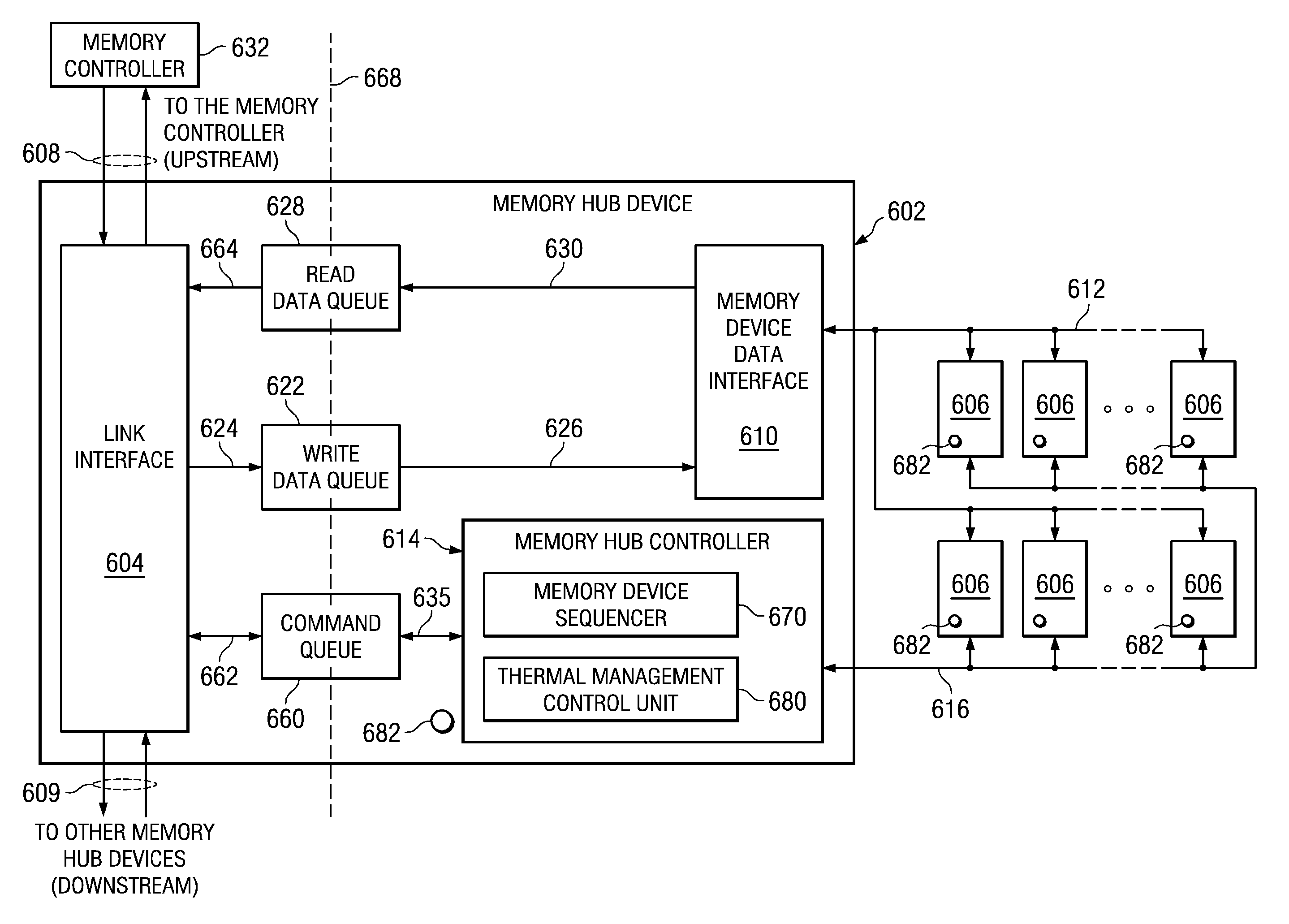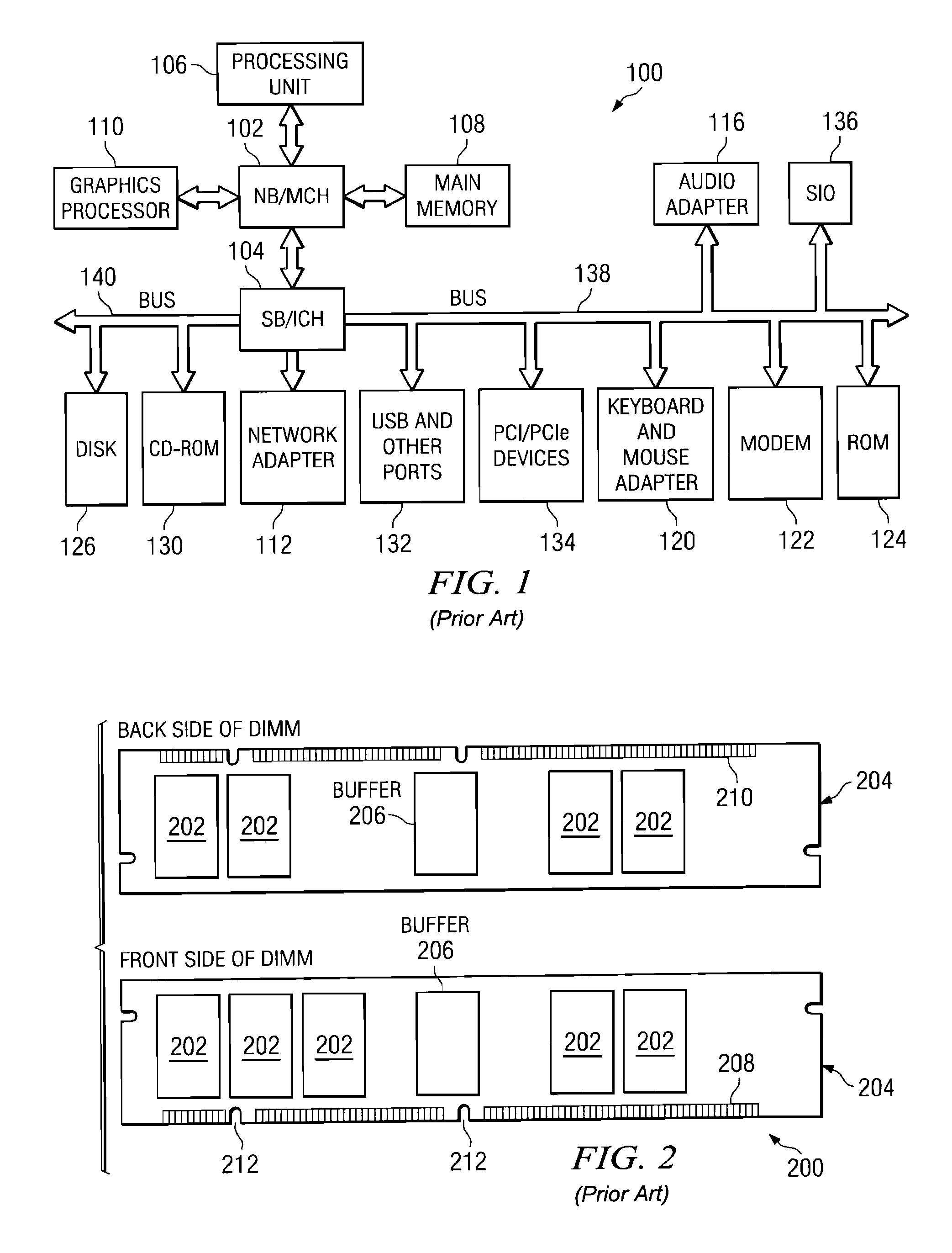System to enable a memory hub device to manage thermal conditions at a memory device level transparent to a memory controller
a memory hub and thermal condition technology, applied in memory systems, sustainable buildings, instruments, etc., can solve the problems of exacerbated memory system design challenges, increased storage, and lower operating costs, so as to reduce the bandwidth of the memory channel, and reduce the cost of operation.
- Summary
- Abstract
- Description
- Claims
- Application Information
AI Technical Summary
Benefits of technology
Problems solved by technology
Method used
Image
Examples
Embodiment Construction
[0030]The illustrative embodiments provide mechanisms for enabling a memory hub device to manage thermal conditions at a memory device level transparent to a memory controller. As such, the mechanisms of the illustrative embodiments may be used with any of a number of different types of data processing devices and environments. For example, the memory subsystem of the illustrative embodiments may be utilized with data processing devices such as servers, client data processing systems, stand-alone data processing systems, or any other type of data processing device. Moreover, the memory subsystems of the illustrative embodiments may be used in other electronic devices in which memories are utilized including printers, facsimile machines, storage devices, flash drives, or any other electronic device in which a memory is utilized. In order to provide a context for the description of the mechanisms of the illustrative embodiments, and one example of a device in which the illustrative em...
PUM
 Login to View More
Login to View More Abstract
Description
Claims
Application Information
 Login to View More
Login to View More - R&D
- Intellectual Property
- Life Sciences
- Materials
- Tech Scout
- Unparalleled Data Quality
- Higher Quality Content
- 60% Fewer Hallucinations
Browse by: Latest US Patents, China's latest patents, Technical Efficacy Thesaurus, Application Domain, Technology Topic, Popular Technical Reports.
© 2025 PatSnap. All rights reserved.Legal|Privacy policy|Modern Slavery Act Transparency Statement|Sitemap|About US| Contact US: help@patsnap.com



